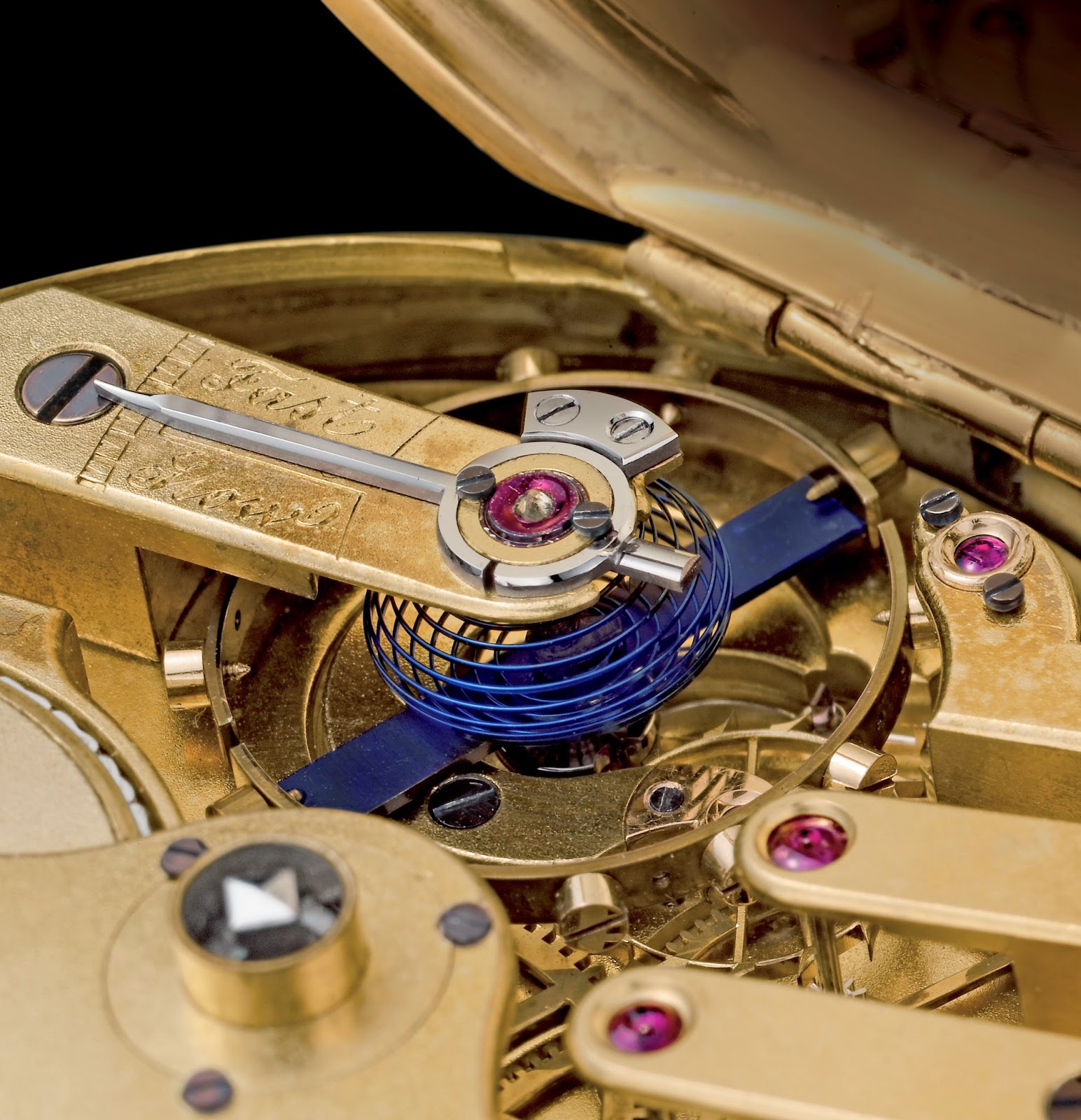Circa 1850
Yellow gold pocket chronometer,
signed Girard & Co. London. Movement with "English"
bridges, chain and fusee, detent escapement, spherical hairspring.
In
accordance with the popular practice of this era, the platinum and bridges are
matted and gilded with mercury.
Circa 1860
Pendant watch in the shape of a
small book, signed Girard-Perregaux. Engraved yellow gold case,
decorated with blue enamel. Enamel dial protected by a small grille with a
multicoloured medallion. Containing a double photograph frame.
Circa 1860
Yellow gold pocket chronometer, signed Girard-Perregaux.
Movement with three parallel bridges, with Tourbillon and detent escapement.
This watch won a first class prize from the Neuchâtel Observatory.
The three
parallel bridges, so beloved by Constant Girard-Perregaux, are decorated here
with guilloche-worked motifs; the barrel is decorated with a rosette; the
Tourbillon cage, with three arms, is of a shape not often seen at
Girard-Perregaux.
1878
Yellow gold pocket chronometer,
signed Girard-Perregaux. Movement with Tourbillon and detent escapement.
Gripped gold dial typical of watches sold in South America.
1884
Yellow gold pocket watch, signed Girard-Perregaux.
Straight bridge movement, lever escapement with spherical hairspring, gold
settings and wheel plates.
Historic pocket watch Tourbillon with three gold
Bridges which was awarded a gold medal at the
Paris Universal Exhibition in 1889.
1889
Tourbillon pocket watch with Three Gold Bridges.
Circa 1889. La Esmeralda.
Several reports of
the Paris Universal Exhibition of 1889 referred to the outstanding display
cases of Girard-Perregaux particularly mentioning an extraordinarily beautiful,
high-precision chronometer that impressed all who saw it. Its movement was a
technical masterpiece with an original structure, and the sumptuous decoration
of its case was an exceptional demonstration of engraving that involved most of
the techniques of the art.
This pocket-watch
with its fascinating tourbillon movement was later named “La Esmeralda”. Over
the months before the International Exhibition, it had achieved some remarkable
test results at the Neuchâtel Observatory in Switzerland, attested by the
institution’s issue of its rating certificate. Then, at the exhibition, it was
awarded a gold medal by the jury who recognised the perfection, both technical
and aesthetic, of this extraordinary timepiece.
The watch bears
the name of the luxury Mexican boutique of the agents Hauser and Zivy, to whom
it was entrusted for a while. Then “La Esmeralda” is thought to have passed
into the ownership of the President of Mexico, Porfirio Diaz (1830-1915) who
led the country from 1876 to 1911. Finally, at the end of the 1960s, the pocket-chronometer
was acquired from the president’s great grandson and it now crowns the
collections of the Girard-Perregaux museum.
I take it this is from 1982, reading the inscription on the barrel.
2010
Tourbillon with Three Gold Bridges.
In tribute to both its own heritage and a masterpiece of Swiss Haute Horlogerie, Girard-Perregaux presents a contemporary reissue of the Tourbillon with three gold Bridges pocket watch; the very same model awarded a gold medal at the Paris Universal Exhibition of 1889.
Girard-Perregaux website
Girard-Perregaux Facebook page
Peter Chong's photographs
more of Peter Chong's photographs





















No comments:
Post a Comment